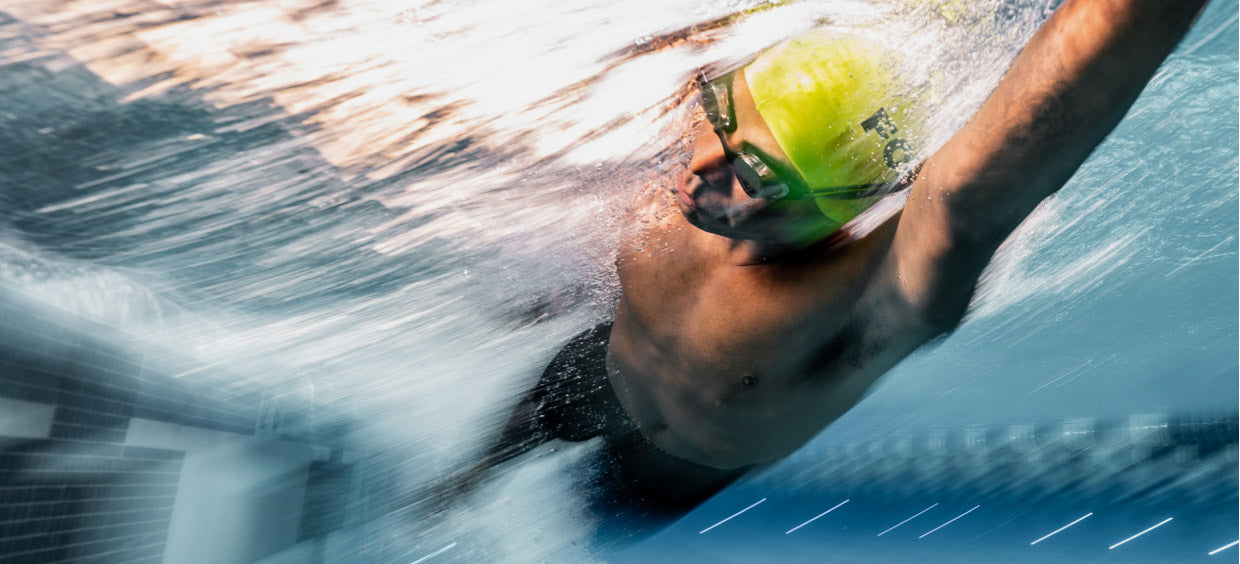Finding the Sweet Spot: How to tailor your swim training for better race day performance
You've probably heard of Stroke Rate, Stroke Length and Distance Per Stroke, but why are these important if you want to become a better swimmer? At the most basic level, what exactly are these terms and how can you use them to really improve your technique and fitness?
In this article, we'll focus on what's called the "Sweet Spot". Brian Johns, our Head of Coaching Science at FORM explains how to first discover your Sweet Spot, but also how to train it, develop it and ultimately improve it.
What is the Sweet Spot in swimming?
The "Sweet Spot" is where your stroke length and stroke rate are working in harmony so that swimming feels fast and effortless. Your "Sweet Spot" will depend on your technique as well as the duration or distance of the interval, workout or race you are doing.
Knowing where your Sweet Spot is, at different speeds and distances, will give you a better understanding of your swimming and help you optimize your swim training so that you can continually improve in the water.
In endurance sport, there is some basic physics to understand that leads to your performance in the water.

- Velocity is your swimming speed
- Stroke Length is how far you can swim on a single stroke, also known as your Distance Per Stroke (DPS)
- Stroke Rate is how fast you can take each stroke
This concept can be applied to any sport where the fastest speed is the ultimate goal. Imagine Usain Bolt breaking the world record in 100m. His speed will be determined by how far he goes on each stride multiplied by how fast he can take his strides.
Stroke length in swimming is determined by your technique more so than in running or cycling.
Improving your technique will help you move your body through the water further with each stroke you take. Consequently, as Stroke Rate increases, your swim technique has to remain consistent to maintain Stroke Length and increase speed.
The key steps to putting these metrics into practice:
1. Consistency: When you're training, you want to be able to keep ALL 3 of these metrics consistent, not JUST your speed. Keeping an eye on all 3 will help you to track improvement over time. Below is an example of a swimmer doing 200m in a short course meters pool. You can see that their time/length, stroke rate, and DPS are consistent throughout the entire 200 and they are swimming in their Sweet Spot.

2. Progression: Once you can maintain consistency in your DPS, SR and V, you can progress to harder training. You can do this by:
- Increasing the volume of your workouts
- Increase the distance of your intervals
- Increase the effort of your swimming
As you increase the difficulty of your training, continue to track these metrics to ensure you are maintaining consistent DPS and SR.
3. Evaluation: If you are unable to maintain a consistent pace in your workout, it is important to recognize whether it was a result of your stroke length shortening, stroke rate slowing down, or both. Understanding why you are slowing down will give you direction in where to improve going forward.
Putting it into practice
Using an example of 10 x 100’s Freestyle as a set, here is how you can use FORM to track these metrics in the goggles and the app to find your Sweet Spot and improve your technical reliability.
- Do the set trying to hold your DPS and Stroke Rate for the whole set and see what your times are as a result. If you hold your DPS and Stroke Rate, by definition you will hold your pace.
- If your times start to slow down, try to identify what is more difficult for you to maintain, your DPS or your SR.
- If you held your times in the set, were you able to manage to keep the same pace within each 100? Did your pace stay the same on the 1st and 2nd 50's? If not, what changed, your DPS or your SR?
If you can manage to hold your pace throughout the set, within each 100 while holding your DPS and stroke rate, then you’ve found your sweet spot!
Tips and tricks for finding your sweet spot
Finding your sweet spot can be a challenge, and it may take some trial and error. Here are a few adjustments that you might have to make in order to find your sweet spot, if:
- You can't hold your pace for the duration set: Start the set at an easier pace that you are able to maintain for the whole set. The start of the set might feel 'too' easy, but find success on holding your pace first before trying to push your boundaries
- You can hold your pace for the set, but much slower at the end of your intervals than the start: It is very easy to start each interval faster as you come off of your rest feeling fresh. Having the same time on every length, or 'even-splitting', your intervals requires patience at the start of each one so that you can apply better effort at the end of each interval. Each interval might feel like a steady build of effort to maintain your pace.
- Your DPS drops when slowing down: This is often due to a lack of muscular endurance to keep your technique reliable. Reiterate technique cues that will help you maintain your technique as you fatigue, especially staying relaxed as you enter your hands and finishing your stroke past your hips
- Your Stroke Rate drops when slowing down: Stroke rate is typically a result of your application of effort and your fitness. Lowering your SR at the start will help you maintain it over the course of the set. Each 100, and the set overall, should feel like you are steadily building your effort to maintain your stroke rate, rather than going hard right at the start and trying to hold on
Improving your Sweet Spot
If you can maintain your pace and even split your intervals, while holding your DPS and SR, you've found the perfect Sweet Spot for you. From here, and to foster further improvement in your swimming, you may want to challenge yourself to find a new sweet spot towards a faster goal.
There are a few ways that you can do this:
- Do the same set, but increase your DPS. This will increase your speed by applying better technique to your swimmer
- Do the same set, but increase your SR. Fitness gains that you've made in training will allow you to hold the higher effort required to increase your stroke rate while maintaining your DPS
- Increase the duration of your set. You were able to do it for 10 x 100's, can you hold the same time/DPS/SR for 12, 15, 20 x 100?
- Decrease the rest for your set. You might have been able to hold your time/DPS/SR for 10 x 100's with 30 seconds rest in between, but can you do it with 20/15/10 seconds rest?
- Increase the volume of your intervals. 10 x 100’s might be a good start, but if you are training for a race that has longer distances, then applying the same time/DPS/SR to 150's or 200's might be the next step in your preparation.
Finding your sweet spot is a great foundation to become a better, more reliable swimmer. Once you have found your sweet spot, you can pick ONE of these variables to change to challenge yourself to improve. Workout to workout, week by week, you can make incremental improvements to your sweet spot that will lead to faster, more efficient and more reliable swimming.
Listen to the full podcast on Apple Podcast.
Or watch the interview here:











